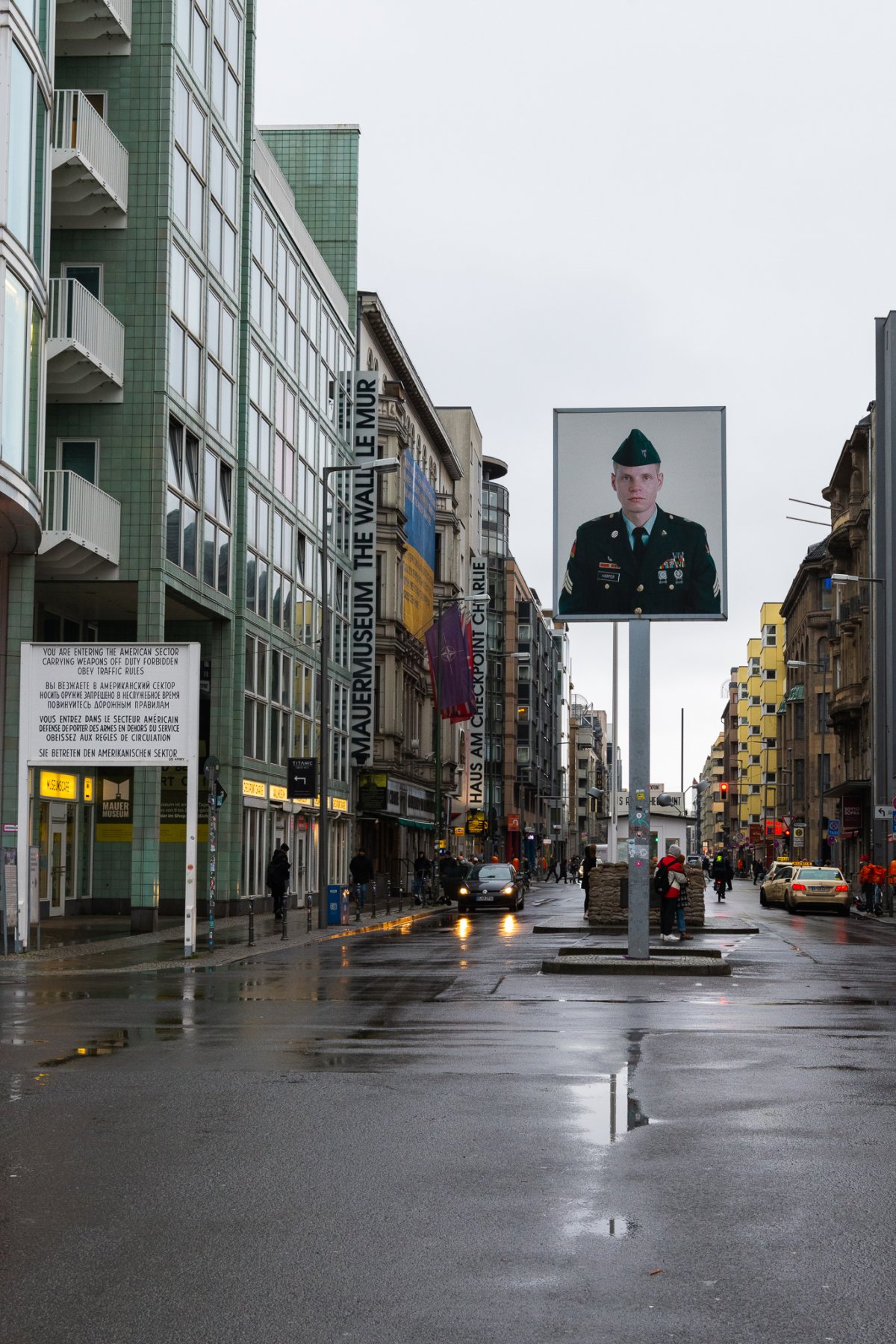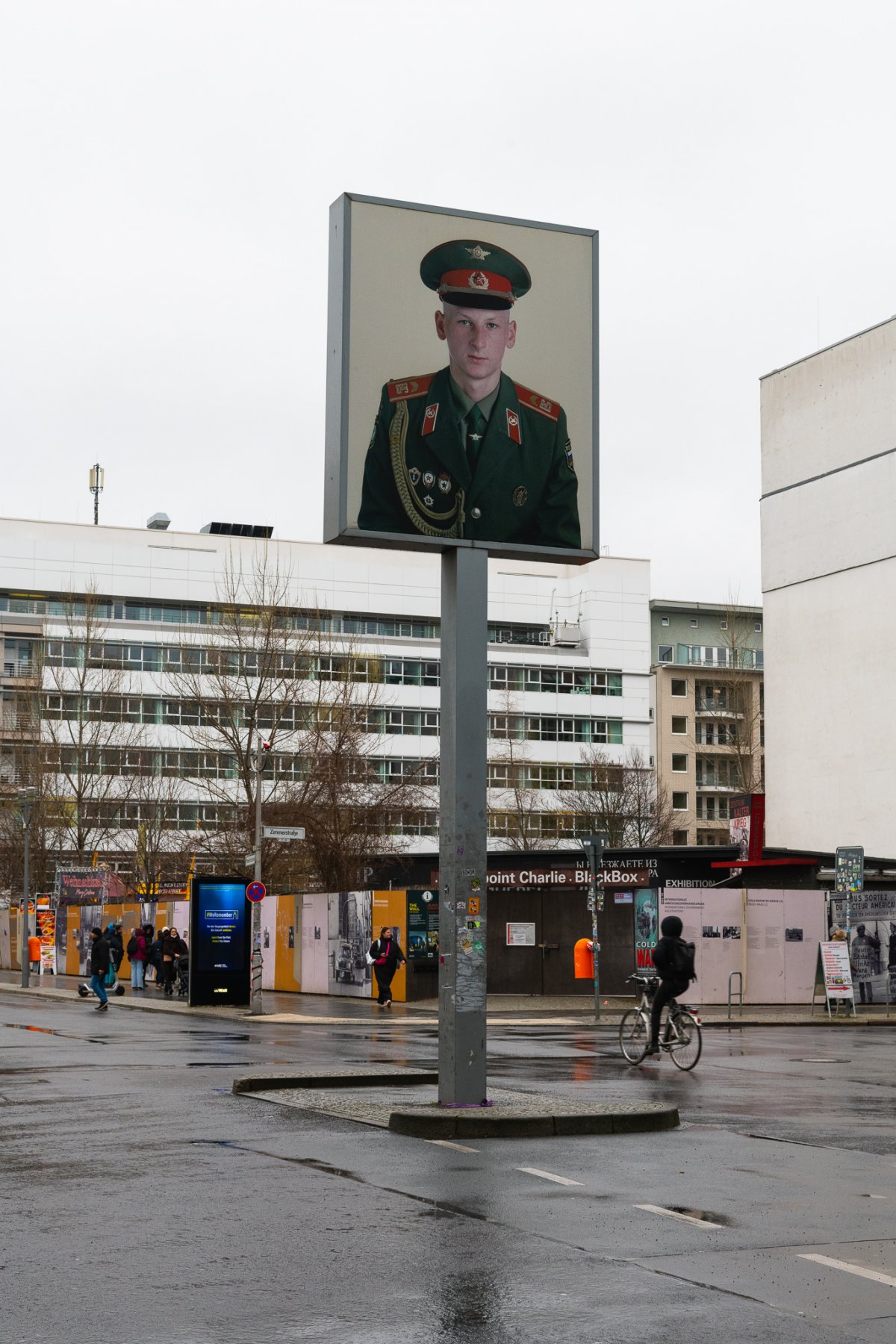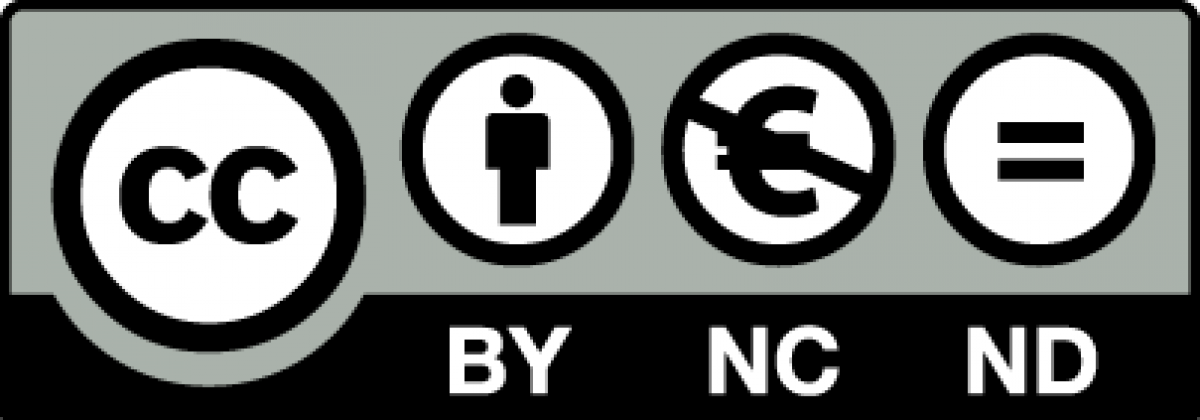The Light Box Instillation by Frank Thiel at Checkpoint Charlie
Memory of a Divided City
For many Berliners and tourists, Checkpoint Charlie is one of the city's most famous landmarks. The site is a reminder of the divided Berlin during the Cold War and the tank confrontation of October 27, 1961, when Soviet and American tanks faced off at the checkpoint at the crossing of Friedrichstraße and Zimmerstraße. Today, the light box installation by Frank Thiel is located there. It draws attention to the military presence of the Allies in Berlin and provides a face to the soldiers stationed there at that time.By Claudia Botor and Lene Schargitz
Light Box Instillation Checkpoint Charlie from the Eastern Side, 26 January 2022 (Photo: Lene Schargitz, CC-BY-SA)

Light Box Instillation Checkpoint Charlie from the Western Side, 26 January 2022 (Photo: Lene Schargitz, CC-BY-SA)
Why these two were chosen for the light box is unknown. Likewise, no further information about the Russian soldier can be found to date. The American soldier, Jeffrey Harper, came to Berlin in 1989 as a tuba player with the 298th Army Band, the military orchestra of the Berlin Brigade. He was stationed in Germany until the withdrawal of Allied troops in 1994, but never at Checkpoint Charlie. He first learned of the use of his photograph during a visit to Berlin in 1999.
Both Jeffrey Harper and Frank Thiel would like to see an appropriate, more authentic representation and warn against the transformation of the site for commercial and tourist purposes. Historians, but also the state of Berlin and other initiatives, are striving to further develop Checkpoint Charlie as a place of remembrance and make its history tangible for everyone.
This text is published under the Creative Commons license "CC BY-NC-ND 4.0". You may share the text by mentioning the license CC BY-NC-ND 4.0 and the authors. Copyright information for the images can be found in the image captions.


